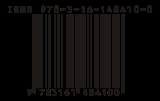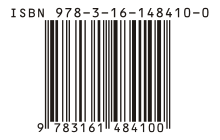
Human-readable
Encyclopedia

Data
The term data refers to qualitative or quantitative attributes of a variable or set of variables. Data are typically the results of measurements and can be the basis of graphs, images, or observations of a set of variables. Data are often viewed as the lowest level of abstraction from which...
or information
Information
Information in its most restricted technical sense is a message or collection of messages that consists of an ordered sequence of symbols, or it is the meaning that can be interpreted from such a message or collection of messages. Information can be recorded or transmitted. It can be recorded as...
that can be naturally read
Reading (process)
Reading is a complex cognitive process of decoding symbols for the intention of constructing or deriving meaning . It is a means of language acquisition, of communication, and of sharing information and ideas...
by human
Human
Humans are the only living species in the Homo genus...
s.
In computing
Computing
Computing is usually defined as the activity of using and improving computer hardware and software. It is the computer-specific part of information technology...
, human-readable data is often encoded as ASCII
ASCII
The American Standard Code for Information Interchange is a character-encoding scheme based on the ordering of the English alphabet. ASCII codes represent text in computers, communications equipment, and other devices that use text...
or Unicode
Unicode
Unicode is a computing industry standard for the consistent encoding, representation and handling of text expressed in most of the world's writing systems...
text, rather than presented in a binary
Binary file
A binary file is a computer file which may contain any type of data, encoded in binary form for computer storage and processing purposes; for example, computer document files containing formatted text...
representation. Virtually all data can be parsed by a suitably equipped and programmed computer or machine; reasons for choosing binary formats over text formats usually center on issues of storage space, as a binary representation usually takes up fewer byte
Byte
The byte is a unit of digital information in computing and telecommunications that most commonly consists of eight bits. Historically, a byte was the number of bits used to encode a single character of text in a computer and for this reason it is the basic addressable element in many computer...
s of storage, and efficiency of access (input and output) without parsing
Parsing
In computer science and linguistics, parsing, or, more formally, syntactic analysis, is the process of analyzing a text, made of a sequence of tokens , to determine its grammatical structure with respect to a given formal grammar...
or conversion.
In most contexts, the alternative representation is a machine-readable format or medium of data primarily designed for reading by electronic, mechanical or optical devices, or computer
Computer
A computer is a programmable machine designed to sequentially and automatically carry out a sequence of arithmetic or logical operations. The particular sequence of operations can be changed readily, allowing the computer to solve more than one kind of problem...
s. For example, Universal Product Code
Universal Product Code
The Universal Product Code is a barcode symbology , that is widely used in North America, and in countries including the UK, Australia, and New Zealand for tracking trade items in stores. Its most common form, the UPC-A, consists of 12 numerical digits, which are uniquely assigned to each trade item...
(UPC) barcode
Barcode
A barcode is an optical machine-readable representation of data, which shows data about the object to which it attaches. Originally barcodes represented data by varying the widths and spacings of parallel lines, and may be referred to as linear or 1 dimensional . Later they evolved into rectangles,...
s are very difficult to read for humans, but very effective and reliable with the proper equipment, whereas the strings of numerals
Numerical digit
A digit is a symbol used in combinations to represent numbers in positional numeral systems. The name "digit" comes from the fact that the 10 digits of the hands correspond to the 10 symbols of the common base 10 number system, i.e...
that commonly accompany the label are the human-readable form of the barcode information. In many jurisdictions, barcode labels used in retail shopping must also include a human-readable price on the merchandise.
With the advent of standardized, highly structured markup languages, such as Extensible Markup Language
XML
Extensible Markup Language is a set of rules for encoding documents in machine-readable form. It is defined in the XML 1.0 Specification produced by the W3C, and several other related specifications, all gratis open standards....
(XML), the decreasing costs of data storage, and faster and cheaper data communication networks, compromises between human-readability and machine-readability are now more common-place than they were in the past. In addition, these structured representations can be compressed
Data compression
In computer science and information theory, data compression, source coding or bit-rate reduction is the process of encoding information using fewer bits than the original representation would use....
very effectively for transmission or storage.
Various organization have standardized the definition of human-readable and machine-readable data and how they are applied in their respective fields of application, e.g., the Universal Postal Union
Universal Postal Union
The Universal Postal Union is an international organization that coordinates postal policies among member nations, in addition to the worldwide postal system. The UPU contains four bodies consisting of the Congress, the Council of Administration , the Postal Operations Council and the...
.
Often the term human-readable is also used to describe shorter names or strings, that are easier to comprehend or to remember than long, complex syntax notations, such as some Uniform Resource Locator
Uniform Resource Locator
In computing, a uniform resource locator or universal resource locator is a specific character string that constitutes a reference to an Internet resource....
strings.
See also
- Data (computing)Data (computing)In computer science, data is information in a form suitable for use with a computer. Data is often distinguished from programs. A program is a sequence of instructions that detail a task for the computer to perform...
- Data conversionData conversionData conversion is the conversion of computer data from one format to another. Throughout a computer environment, data is encoded in a variety of ways. For example, computer hardware is built on the basis of certain standards, which requires that data contains, for example, parity bit checks....
- Human–computer interactionHuman–computer interactionHuman–computer Interaction is the study, planning, and design of the interaction between people and computers. It is often regarded as the intersection of computer science, behavioral sciences, design and several other fields of study...
- Human factorsHuman factorsHuman factors science or human factors technologies is a multidisciplinary field incorporating contributions from psychology, engineering, industrial design, statistics, operations research and anthropometry...

